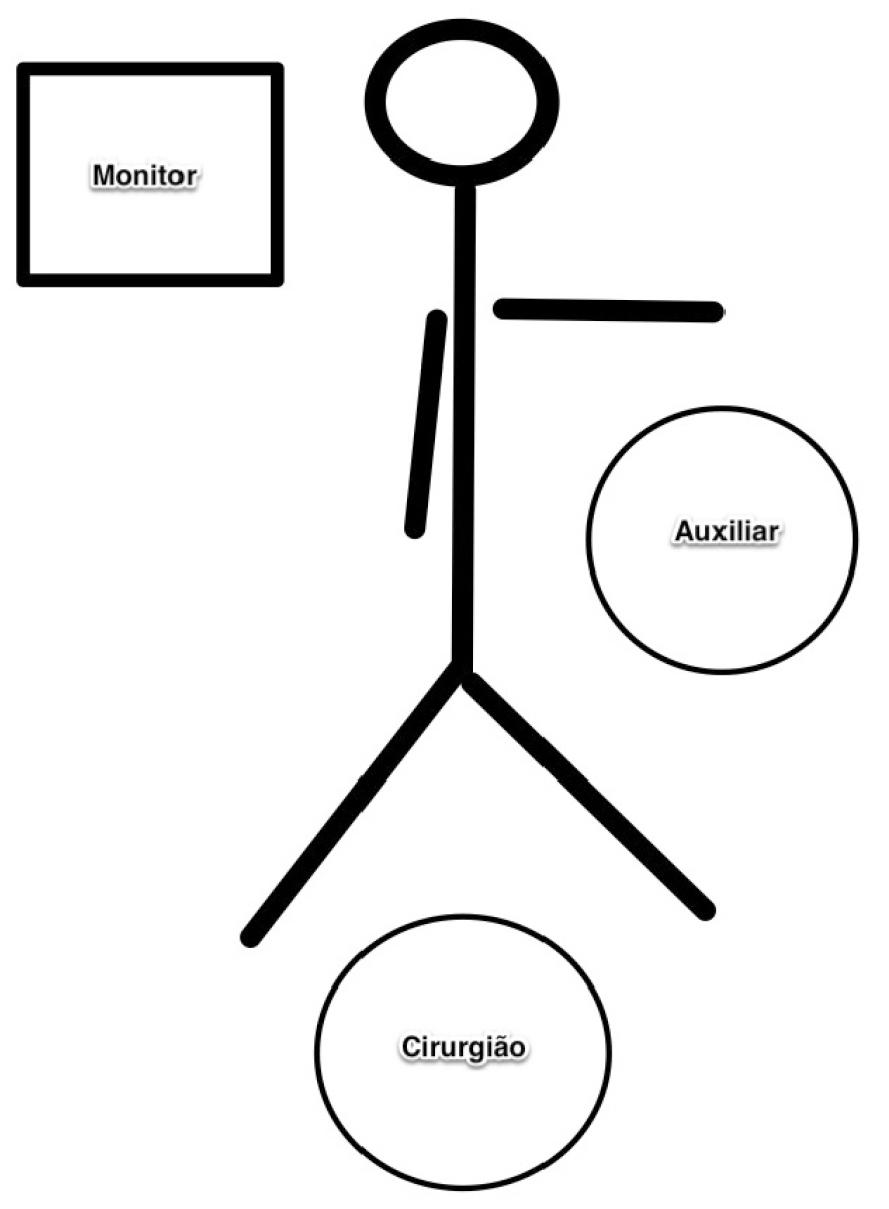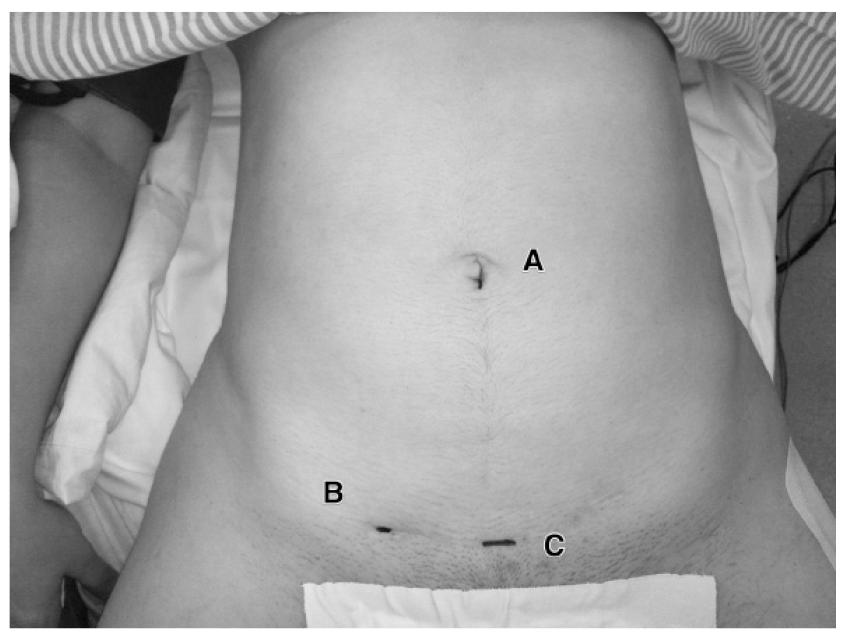Background : The minimally invasive abdominal surgery has evolved to reduce portals, culminating with a single incision and natural orifice operation. However, these methods are still expensive, difficult to implement and with questionable aesthetic results.
Aim : To present the standardization and preliminary results of a technique for performing laparoscopic suprapubic access by the principle which was called the Supra Pubic Endoscopic Surgery for cholecystectomy.
Method : The average body mass index of patients, the mean operative time, clinical data of the postoperative complications and quality of life were prospectively studied. The operation incisions consisted of: A) umbilical for instrumental dissection and clipping; B) in the right groin for handling and gallbladder gripping; C) suprapubic for the camera. With the patient in reverse Trendelenburg and left lateral decubitus, the operation flew by the camera trocar in C, proceeding with dissection and isolation of the biliary pedicle, identification of cystic duct and artery, with usual instrumentation. Transcystic intraoperative cholangiography was performed in all cases in which there were indications. The procedure was completed with clipping and sectioning of the cystic duct and artery, retrograde resection of the gallbladder and extracting it by the umbilical trocar incision under direct vision.
Results : Thirty patients undergone this surgical procedure between March and June 2012 and were evaluated. The mean age was 40.7 years and the indications were typical biliary colic in 18 cases (60 %), cholecystitis in five cases (16.6 %), biliary pancreatitis in one case (3.3%); polyp in three cases (10%) and obstructive jaundice at three cases (10%). The average body mass index was 27.8 (23.1-35.1) and surgical time ranged between 24 and 70 minutes.
Conclusion : The technique proved to be feasible and safe , with no significant complications, and satisfactory cosmetic results.
Minimally invasive surgery; Cholecystectomy; Laparoscopy

 Suprapubic laparoscopic cholecystectomy: technique and preliminary results
Suprapubic laparoscopic cholecystectomy: technique and preliminary results



